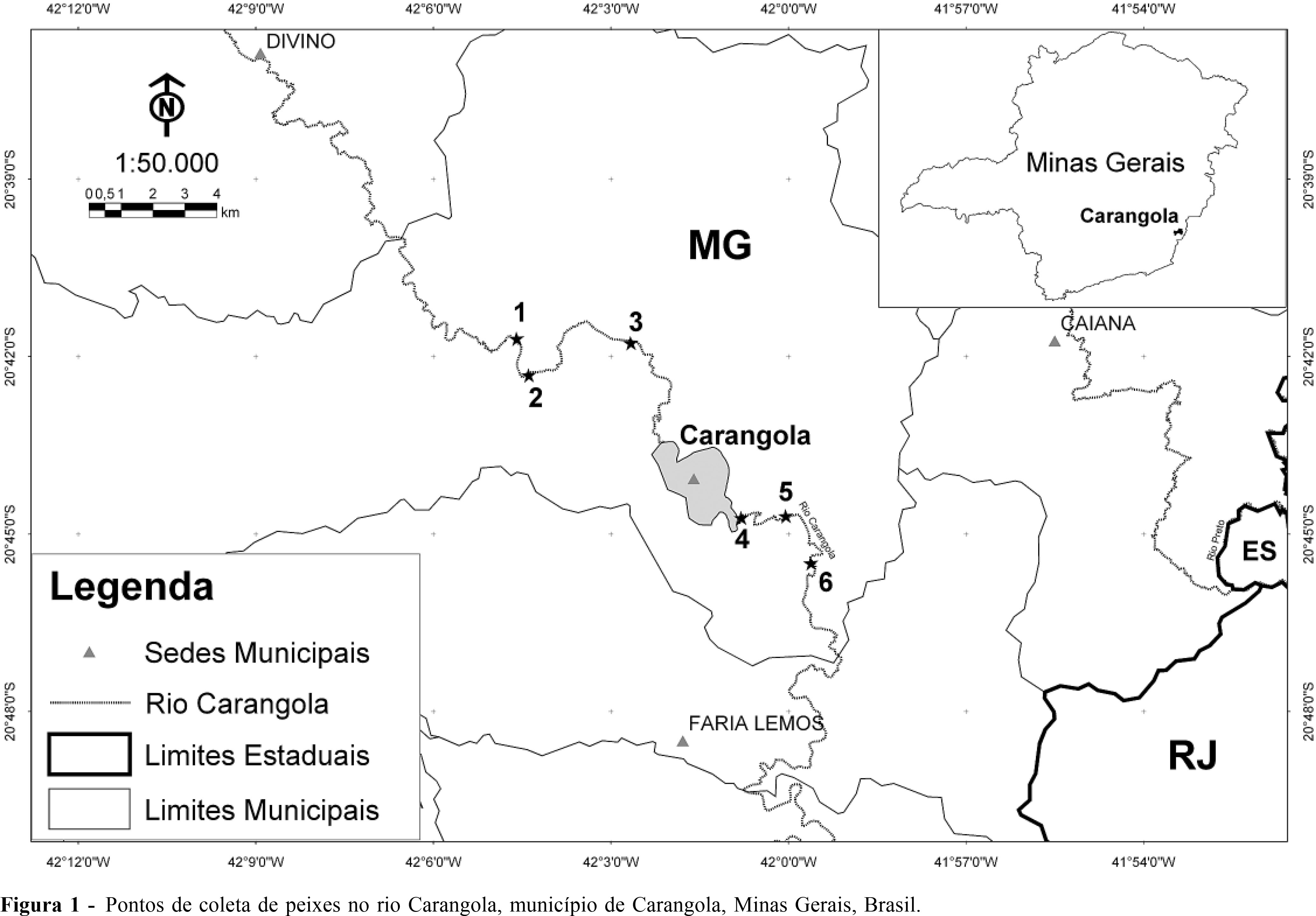Ichthyofauna of the Carangola River, Paraíba do Sul basin, in the municipality of Carangola, Minas
DOI:
https://doi.org/10.35699/2675-5327.2006.23139Keywords:
Carangola River, fish, ichthyofauna, species richness, abandoned pastureAbstract
The Carangola River is one of the main components of the river Muriaé, which is the major tributary of the lower Paraíba do Sul. In the present study, sampling was carried out every three months during one year in three sites situated upstream the town of Carangola (Minas Gerais state, Brazil) and in three sites downstream. Twenty fish species, belonging to 17 genera and 12 families, were found — fifteen species upstream and 13 downstream the town. Diversity estimates (Shannon and inverse Berger-Parker indices), based on biomass and abundance, as well as physical-chemical parameters (turbidity, CO2 concentration and pH) did not differ between upstream and downstream sites. On the other hand, bacteriological parameters (fecal and total coliform counts) were significantly different between upstream and downstream sites. These differences, however, do not seem to be affecting the distribution patterns of the fish fauna, since no significant differences in faunistic composition were detected between the surveyed sites.

Downloads
Published
Issue
Section
License

This work is licensed under a Creative Commons Attribution-NonCommercial 4.0 International License.
